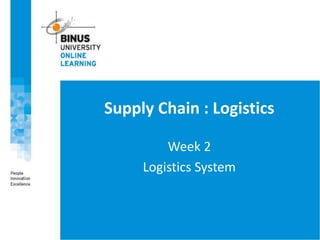Logistics deals with planning and controlling material flows and information to optimize performance measures like cost while satisfying constraints. It plays an important role in military, business, and public contexts. A logistics system consists of facilities and transportation services linking them. A supply chain includes all facilities and services converting raw materials into products for distribution. Logistics decisions must balance objectives like cost reduction, capital reduction, and service level improvement. Quantitative methods like benchmarking, simulation, and optimization help evaluate alternatives and make strategic, tactical, and operational logistics decisions.


















